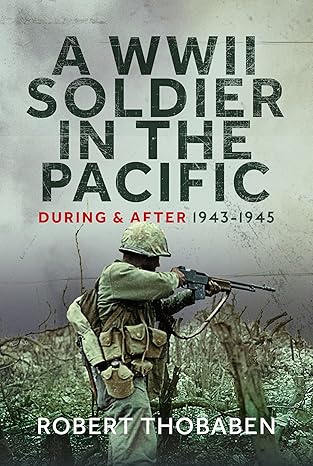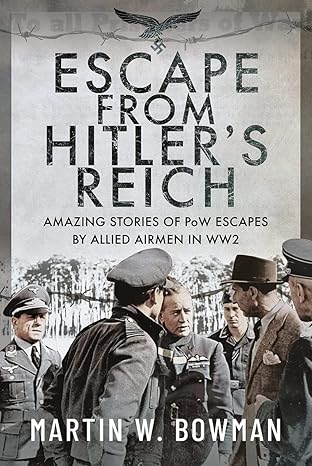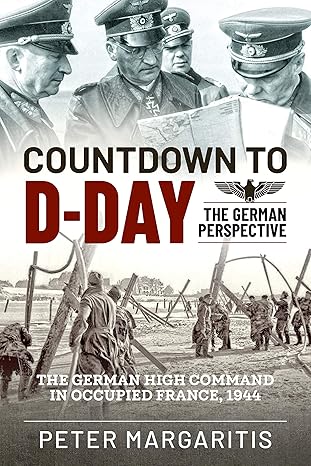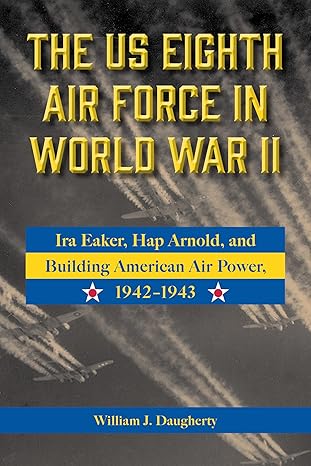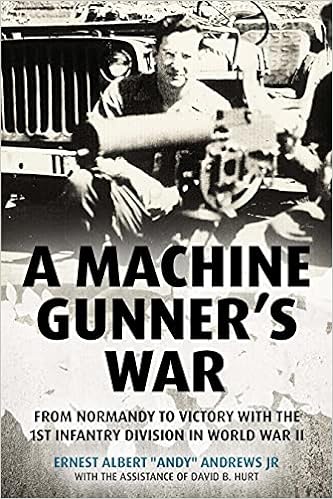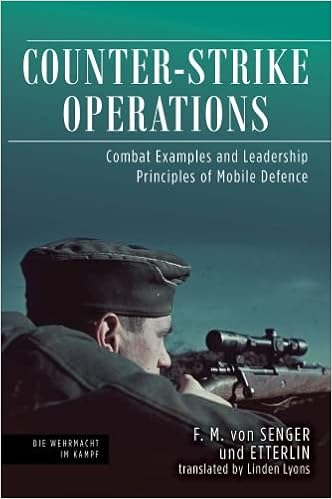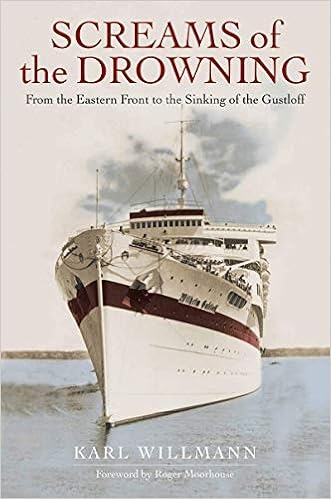Island Hopping in World War II: Trench Warfare at Sea
By LtCol Richard Beil USMC (Ret.)
Those who study military history are familiar with how strict adherence to the detailed mobilization schedule of the Schlieffen Plan contributed to the beginning of World War I. Count Alfred von Schlieffen, Chief of the German General Staff from 1891 to 1906 was, like all German officers, schooled in Clausewitz’s precept, “The heart of France lies between Belgium and Paris.“ [1]
Since the Franco-Russian alliance of 1892, Germany considered itself surrounded. Should war be deemed necessary, von Schlieffen saw it as a two-front war. In such a war, he wrote, “the whole of Germany must throw itself upon one enemy, the strongest, most powerful, most dangerous enemy, and that can only be France.” [2] Schlieffen’s plan for 1906, the year he retired, called for a 6 week campaign with seven-eighths of Germany’s armed forces dedicated to the defeat of France while one-eighth held the eastern frontier against Russia. Following the defeat of France, the entire German army would then face the second enemy.
Clausewitz had ordained a quick victory through the Napoleonic decisive battle, targeting the enemy’s armed forces. Occupation of the enemy’s territory and getting ahold of his resources was secondary. Speed was essential. Anything that protracted a campaign he condemned. His was a war of annihilation. Gradual reduction of the enemy, a war of attrition, was anathema.
To bring about this decisive victory, Schlieffen fixed on Hannibal’s double envelopment of the Romans at Cannae in 216 BC. However, Schlieffen did not have enough manpower for a double envelopment. Instead, he substituted an overpowering right wing that would spread across the whole of Belgium, cross the entire Franco-Belgian frontier, and descend on Paris along the Valley of the Oise. Schlieffen wanted this right wing to reach as far west as Lille in order to make the envelopment complete. “When you march into France,” he said, “let the last man on the right brush the Channel with his sleeve.” ][3]
To this end, a meticulous plan of mobilization and transportation had been devised. The plan was so detailed, it specified the number of train axles that would pass over a particular bridge at a given time. Once the order was given, the vast machinery for calling up, equipping, and transporting two million men began to turn automatically. “One army corps alone – out of the total of 40 in the German forces – required 170 railway cars for officers, 965 for infantry, 2,960 for cavalry, 1,915 for artillery and supply wagons.” [4] Upon Schlieffen’s retirement in 1906, he was succeeded by Helmuth Johannes Ludwig Graf von Moltke (von Moltke the Younger). By 1914, he and the General Staff were completely wedded to Schlieffen’s plan. However, on 1 August 1914, the Kaiser tried to throw a monkey wrench into all that work.
Just after five o’clock that day, a telegram arrived in the Foreign Office in Berlin from London. The German Ambassador, Prince Lichnowsky, reported an English offer saying that “if Germany would not attack France, England would remain neutral and would guarantee France’s neutrality.” [5] That is not exactly what England had said, however. What British Foreign Secretary, Sir Edward Grey, had actually offered was to keep France neutral if Germany promised not to attack either France OR Russia. It must be remembered that, to this point, this was simply a border war between Austria-Hungary and Serbia, who Russia had pledged support.
In any event, German Chancellor Theobald von Bethmann-Hollweg, went immediately to the Imperial Palace. The Kaiser, who had actually been trying to find a way to keep from going to war simply to support Austria-Hungary, clutched at this last straw. “Now, we can go to war against Russia only. We simply march the whole of our Army to the East.” [6]
To von Moltke, this was tantamount to throwing a car into reverse at 60 miles per hour. He told the Kaiser that it could not be done. “When von Moltke’s ‘It can’t be done’ was revealed in his memoirs after the war, General von Staab, Chief of the Railway Division, was so incensed that he wrote an entire book to prove it could have been done.” [7]
But, whether or not the Schlieffen Plan could have been altered is not the point here. In fact, the Schlieffen Plan WAS altered after the Germans entered France. The last man’s sleeve never did brush the Channel. The right wing never was made as strong as von Schlieffen envisioned. And, it was not the Schlieffen Plan that brought on the stalemate of trench warfare. That was brought about principally by blind adherence to the Clausewitzian prescription of the decisive battle and placing the focus of effort on the enemy’s armed force.
The purpose of this paper is to argue that many Marine casualties in World War II were unnecessary. While some heavily defended islands were bypassed, others of limited utility were attacked frontally, directly into the teeth of the Japanese defenses, reminiscent of the strategy and tactics on the Western Front.
The American Way of War
Prior to the Civil War, American soldiers received very little training in strategy. Although West Point had been founded in 1802, its curriculum was principally devoted to Engineering. This was deliberate. America did not want to develop a distinct “warrior class” as was found in the Old World. Engineering provided knowledge and skills useful in civic society.
The first writers on strategy in the American Army, Dennis Hart Mahan and Henry Halleck, were not proponents of a strategy of annihilation. Both Halleck’s Elements of Military Art and Science in 1846, and Mahan’s Elementary Treatise on Advanced Guard, Outposts, and Detachment Service of Troops in 1847, were focused on fortifications. This made them advocates to a large extent of the strategic value of the well-prepared defense. However, Mahan did favor the offense at the tactical level.
If the offense is attempted against a strongly positioned enemy, Mahan wrote, it should be an offensive not of direct assault, but of the indirect approach, of maneuver and deception. Victories should not be purchased by the sacrifice of one’s own army. “To do the greatest damage to our enemy with the least exposure to ourselves is a military axiom lost sight of only by ignorance to the true ends of victory.” [8]
This was in keeping with the nature of limited war, which was the norm in Europe prior to Napoleon, and the strategic precepts of Antoine Henri, Baron de Jomini. In the early 19th century, it was Jomini, not Clausewitz, who became the principal interpreter of strategy to Americans. Clausewitz was not translated into English until 1873. How, then, did the Napoleonic principals of decisive battle and annihilation come to govern battlefield strategy and tactics in the American Civil War? According to historian Russell Weigley, the cautious strategies of the Enlightenment had fallen before the Napoleonic strategy of annihilation less because of any academic teaching, than with the arresting image of Napoleon himself. “American soldiers knew that the climactic battle was the central feature of the Napoleonic art of war, with the destruction of the enemy arm, both physically and morally, the battle’s aim.” [9] If an American “way of war” existed, from the Civil War through World War II, this was it.
War Plan Orange
The Japanese victory over Russia in the Russo-Japanese War of 1904-5 stunned the world. How could a small island nation with no natural resources defeat such a colossus? Regardless of how it was accomplished, the fact was that Japan had to be regarded in an entirely new light.
Japan posed no existential threat to the continental United States, separated as they were by the vast reach of the Pacific Ocean. However, because the U.S. came into possession of the Philippines and Guam at the end of the Spanish-American War, Japan could pose a threat to U.S. territory in the Far East. From 1905 on, U.S. planners struggled for a way to defend that territory.
The plan for war with Japan was code named Plan Orange. War Plan Red envisioned war with Canada and Britain; War Plan Green, Mexico; War Plan Black, Germany. In all plans, the U.S. was Blue. For the Army, planning for a Pacific War was an alien task. In a major war, it expected to expand behind safe ocean frontiers. Many months would pass before it could dispatch an important expedition so the generals would have plenty of time to mull operations. Army Orange plans consisted primarily of mobilization timetables and embarkation schedules to support Navy designated offensives.
The Philippines
The 1977 movie MacArthur dramatized the July 1944 Pacific Strategy Conference in Hawaii where Admiral Chester Nimitz ((CINCPAC/CINCPOA) supposedly argued that the U.S. should bypass the Philippines, deeming the archipelago unnecessary to the defeat of Japan. Conventional wisdom holds that he was thwarted by the impassioned plea of General Douglas MacArthur that the United States had a constitutional responsibility to the people of the Philippine Islands and, therefore, must liberate the islands without further delay. He declared that to bypass any or all the islands would destroy American honor and prestige throughout the Far East, if not in the rest of the world as well.
A review of the history of the evolution of Plan Orange and its various iterations shows that MacArthur’s position was not new. Following Harding’s election as President in 1920, he appointed retired Army General Leonard Wood governor-general of the Philippines. During a visit to Manila by Navy Secretary Edwin Denby in 1922, Wood learned that naval planners had decided to sacrifice the Philippines should a war occur. Wood wrote to Secretary of War John W. Weeks, saying:
| “I protest to you most earnestly and beg that you will appeal to the Secretary of the Navy and to the President against the fatal assumption on the part of the Navy that…the Philippine Islands could not be defended, must be abandoned…Such a policy of abandonment spells…national dishonor and the beginning of a retrogression which God alone can see the end of. Abandonment will be highly injurious to us abroad and far-reaching in its disintegrating and demoralizing effect upon our own people… The Philippine Islands must be succored by the Fleet.” [10] |
From that point on, every iteration of Plan Orange had, as a fundamental tenet, retaking the Philippines to establish a forward base for the third phase of the strategy to defeat that empire. Having attended the Naval War College between the wars, where study of Plan Orange was part of the curriculum, Nimitz would have known that. In his 1950 book I Was There, Roosevelt’s Chief of Staff, retired Admiral William Leahy, stated that the issue was principally an objection to retaking Luzon. Nimitz stressed that “he did not see that Luzon, including Manila Bay, had advantages that were not possessed in other areas in the Philippines that could be taken at less cost in lives and material.” [11] Therefore, it is disingenuous to say that MacArthur won, and Nimitz lost, that argument. However, in all those plans, that forward base would be on Mindanao, not Luzon.
War in Three Phases
For the Navy, war with Japan posed a nightmare, particularly in the days of coal powered steamships. Over a period of 30 years, and despite every effort to overcome time and space factors, the answer was always the same with regard to the Philippines - You can’t get there from here! - at least not in time to prevent their being taken by the Japanese. Geography dictated a Blue-Orange war of three phases. The planners easily visualized the opening and closing phases in which the advantages of geography would accrue first to Japan and then to the United States. The strategic suppositions about those two periods were fixed by 1906 and 1911, respectively, and changed little thereafter.” [12]
In Phase I, Japan was expected quickly to overrun Blue possessions in the western Pacific. Prior to World War I, coal-fired battleships could operate about 2,000 miles from their bases, torpedo boats and destroyers about half that far. The Philippines and Guam were vulnerable, lying 1,500 miles from Japan and only 570 and 900 miles, respectively, from Japanese outposts in the Pescadores and Bonin Islands.
To even reach the Western Pacific, the U.S. Navy would face formidable challenges. Until the naval base in San Diego was established in 1922, the U.S. Fleet was based in the Chesapeake. Just getting to the war zone would entail a trip of 14,000 miles across the Atlantic and Indian Oceans, or almost 20,000 miles around Cape Horn. After the opening of the Panama Canal, the cruise would still be 12,000 miles. Even after basing in California and, later, Hawaii, ships would still have to travel 7,000 and 5,000 miles, respectively.
A fleet’s power was estimated to erode by 10% for each 1,000 miles it cruised due to wear and tear, prolonged absences from base for needed repairs, and tropical growth that fouled hulls and reduced speed by several knots within a few months of leaving dry dock. Worst, attrition attacks during transit would further erode the fleet’s fighting ability.
The long haul from America’s arsenals and coal mines dictated employment of five to ten times as many merchant vessels as Japan to maintain equal strength in the war zone, and these would be exposed to attack during much of their transit. Japan, on the other hand, could service its outposts free of risk until the U.S. warships reached the war zone. Extension of ship ranges by conversion to oil and, later, by refueling at sea, eased the penalty of distance, but the problem worsened again in the air age because planes had action radii of hundreds of miles.
Phase II was the most troubling. Developed in principal in 1914, the entire U.S. Navy and an Army expeditionary force would advance to the western Pacific and develop a base, secure their supply lines, and sever Japanese trade with all regions except northeast Asia. They would then build up strength for Phase III.
Over the years, three solutions for Phase II were proposed. The first entailed building a naval base in the Far East during peacetime. This was a non-starter in the inter-war years. The Congress refused to even consider spending money in that fashion and, at the Washington Conference in 1922, the U.S. traded away the possibility of constructing any such base in exchange for mutual arms reductions.
The second solution was to rush the fleet to the Philippines and to improvise a base as soon as war began. This was called the “Through Ticket to Manila”. Because of the distances involved, this was never considered a viable option after 1934.
The ultimate solution was to advance across the Pacific step-by-step, building mobile bases set up on intermediate islands. This was actually the strategy followed, although where those bases might be changed as the war progressed.
Phase III would begin once an advance base had been established at Dumanquilas Bay on Mindanao in the Philippines. Then, the Blue fleet and expeditionary forces would advance northward through the islands, paralleling the coast of Asia, drawing ever nearer to Japan, to starve it of food, fuel and raw materials by blockade and bombarding accessible targets until it capitulated - essentially a maritime siege.
One thing must be kept in mind. Throughout all the planning, over all the years of the early 20th century, the Navy never envisioned confronting the Japanese Army en masse, either on the mainland of Asia or Japan itself. It always envisioned a maritime war. That the war could not be concluded without invasion of the Japanese home islands was a view held by the Army. But, naval officers were also imbued with the Clauswitzian precept of the decisive battle. It would simply take place at sea, in a grand fleet action led by battleships, reminiscent of Trafalgar, Tsushima, and Jutland.
No Orange Plan was ever enacted by Congress or signed by the President. In mid-1941, Roosevelt gave oral approval to Plan Rainbow Five, reflecting the Germany first policy in case of war. Adoption of the Rainbow Plan automatically cancelled Plan Orange. However, the President announcing Germany first did not mean that the U.S. Navy would clean out all the filing cabinets and throw away all the planning documents that they had accumulated over the preceding 30 years. Neither could they throw away the institutional memory of everyone who had worked on the strategy against Japan.
Of course, Rainbow Five did not envision the loss of the Pacific Fleet’s battleships at the outset of war. Neither had Plan Orange. It did not envision that Britain would lose their bastion at Singapore, requiring creation of a separate theater in the South Pacific to protect Australia. However, the plan had always assumed that it would take 6 months to a year to launch Phase II. The sequence and targets of the island hopping campaign in the Central Pacific, as well as new technology (oil fired ships, aircraft), were modified slightly. The Navy no longer needed coaling stations as they had in early Orange Plans. The capabilities of land-based aircraft significantly changed the calculus of time and space. But, the manner in which the Navy marched through the Pacific, taking particular island groups in a particular sequence, followed almost exactly Plan Orange.
Although the decisive fleet battle never occurred, naval officers also followed the maxim that the principal focus of effort was annihilation of the enemy’s armed forces, whether on land or at sea. It was this focus that led to some needless battles.
Through the Mandates
Micronesia (Greek for “tiny islands”) is comprised of several island groups aggregating a mere 716 square miles of land sprinkled across an area of the North Pacific equal in extent to the continental United States. The island groups germane to the Central Pacific campaign in World War II are the Gilberts, the Marshalls, the Carolines, the Palaus, and the Marianas. Following the Spanish-American War, the U.S. took possession of Guam and, in 1899, also took possession of the unclaimed and uninhabited island of Wake. This left Spain with the remainder of the Spanish East Indies. The Spanish government decided to sell the remaining islands to a new colonial power, the German Empire. On February 12, 1899, Germany took possession of the Carolines, the remaining islands of the Marianas, and the Palaus. In 1915, the Gilbert and Ellice Islands were proclaimed a colony of the British Empire.

Japanese Mandated Islands Shipping Routes - maps.nationmaster.com (Image used for non-commercial, educational and critical comment purposes under Fair Use Doctrine). |
Following World War I, the former German possessions were awarded to Japan by the League of Nations as the South Pacific Mandate. Developing a route through these island groups, particularly selecting suitable, intermediate forward bases to service the fleet on its journey to the Philippines, would become the basis for Phase II.
The Royal Road
The concept of using Micronesia as a route had appeared in studies of intermediate havens as early as 1907. In 1934, Navy planners drew up the Royal Road Plan, a blueprint for penetrating the outermost ring of Japanese defenses, the eastern and central Mandate, beginning in the Marshalls. The Gilberts, as British possessions, were not included in the Mandate. Therefore, there was no plan to attack through the Gilberts.

Japanese Defense Zones - U.S. Navy War Plans Division, War Plan Orange-U.S. Strategy to Defeat Japan 1897-1945, Map 17.1, p. 188 |
These were islands closer to a U.S. than to a Japanese main base. But, which islands to take? The Marshalls alone consisted of 31 atolls spread over half a million square miles. Although a single atoll would suffice for Fleet Base One, some advocated clearing every enemy held island. This derived from studies in the 1920s about guarding convoys with very short range aircraft, all that were then available.
Marine planners insisted on carrier air cover throughout any invasion. The Navy was adamant that the carriers must roam free. This problem was somewhat ameliorated with the introduction of the B-17 in 1935, followed by the B-25 in 1940 and the B-24 in 1941. If a lightly defended island within the combat radii of those planes could be taken, the fleet carriers would not need to remain stationary covering the landing force. The escort carriers (CVE) further freed the fleet carriers from this duty.
The decision reached was that Eniwetok would be adapted as Fleet Base One. After its establishment, the Navy would proceed to Truk in the Carolines, a great arsenal that could be supplied and defended more easily than Mindanao. In the Orange Plans, it was intended to use Wake Island to support operations in the Marshalls. When Wake fell, planners looked to the Gilbert and Ellice Islands for airfields. What was needed was AN island, not any particular island.
Tarawa

Gilbert Islands (Tarawa) - Wikipedia (Image used for non-commercial, educational and critical comment purposes under Fair Use Doctrine). |
The Battle of Tarawa, Operation Galvanic (20-23 November 1943) was the first battle that didn’t need to happen. It cost America 1,696 killed and 2,101 wounded. It has been rationalized as having taught valuable lessons that would be applied to future atoll wars, including the need for better reconnaissance, more precise and sustained pre-landing bombardment, additional amphibious landing vehicles and improved equipment. The lesson it did not teach was to refrain from attacking into the teeth of an enemy’s defenses when an alternative was available.
A year earlier, on 2 October 1942, Marine forces had taken Funafuti in the Ellice Islands specifically to provide a base for land based aircraft to support future operations in the Gilberts. In August 1943, they took the islands of Nanumea and Nukufetau. Navy Seabees constructed airfields on all three islands. Perhaps because Marine casualties were negligible, few are even aware those operations took place. And, perhaps because the high Marine casualty rate at Tarawa has captured attention, few are aware of the other assaults that took place during Operation Galvanic.
As the Marines struggled ashore on Tarawa, the Army’s 27th Infantry Division was assaulting Butaritari (called Makin at that time), 100 NM to the north, while the submarine USS Nautilus was landing a company of 78 U.S. Marine Corps Amphibious Reconnaissance Scouts, with Australian Army Lt George Hand, formerly of the Ocean Island Defense Force, acting as an interpreter to seize the island of Abemama. They defeated the Japanese garrison with fire support from Nautilus. On the morning of 25 November, a native reported to the Marines that the remaining Japanese committed suicide.
The assault on Butaritari actually began 7 days before Tarawa, on 13 November 1943, supported by USAAF B-24 bombers of the Seventh Air Force from the Ellice Islands. Grumman FM-1 Wildcat fighters escorted Douglas SBD Dauntless dive bombers and Grumman TBF Avengers from escort carriers USS Liscome Bay, USS Coral Sea and USS Corregidor.
On the eve of the invasion, the Japanese garrison on Makin Atoll’s main island, Butaritari, consisted of 798 men: 284 troops of the 3rd Special Base Force-Makin Detachment, 100 aviation personnel, 138 members of the 11th Construction Unit and 276 men of the 4th Fleet Construction Unit, all commanded by Lt. j.g. Seizo Ishikawa. Most of the aviation and labor troops had no combat training and were not assigned weapons or a battle station. The number of actual combat troops on Makin was no more than 300 men.
| Total U.S. casualties - 66 soldiers killed and 152 wounded. |
The stated purpose of the assault on Tarawa was to capture the Japanese airfield there on Betio. This field became Hawkins Field in honor of Marine 1st Lt. William Dean Hawkins who was killed during the battle and was posthumously awarded the Medal of Honor. The field proved too short for even B-25 aircraft and another field had to be built on nearby Bonriki. By April 1944, just 5 months after its capture, Tarawa was abandoned as operations moved farther into the Marshalls to secure Eniwetok for Fleet Base One. Today, both Abemama and Butaritari have airports. 1,696 Americans died taking an island when other islands in the group would have served the same purpose, and one was taken with minimum loss of life.
Writing after the war, General Holland Smith said: “Was Tarawa worth it? My answer is an unqualified: No. From the very beginning the decision of the Joint Chiefs to seize Tarawa was a mistake and from their initial mistake grew the terrible drama of errors, errors of omission rather than commission, resulting in these needless casualties.” [13]
The Palaus and Bonins
Looking again at the Japanese Defense Zone map, the second zone runs from the Bonin Islands in the north to the Palau Islands in the south, almost due east of Mindanao. In true ground-pounder fashion, Army Colonel Walter Krueger termed this the enemy’s Main Line of Resistance (MLR). He accepted the premise that Truk was indispensable to breaking this second barrier. As it happened, Truk was bypassed by Nimitz in the same way MacArthur had bypassed Rabaul. But, it was along this MLR that two other needless battles took place costing thousands of Marine lives. The battles on Peleliu (Operation Stalemate) and Iwo Jima (Operation Detachment), represented Schieffen Plan-like adherence to plans that had been overtaken by events.
Space limitations here preclude a full discussion of Peleliu. The late Col. Joe Alexander provided an excellent critique of that battle in his article What Was Nimitz Thinking? (U.S. Naval Institute Proceedings, Nov. 1998).

Bonin Islands (Iwo Jima) - Wikipedia (Image used for non-commercial, educational and critical comment purposes under Fair Use Doctrine). |
The perceived need to take Iwo Jima, however, represented what can only be termed a fixation on the Bonins, based on a pre-war idea put forth by Admiral Husband Kimmel while still CINCPAC. As previously stated, Navy planning for a possible Pacific war had always envisioned the climactic fleet engagement. At various times, there were proposals put forth to deliberately draw out the Japanese fleet to this end. In early 1941, Admiral Richmond Turner, Director of the Navy War Plans Division (OP-12), told British military emissaries “that the Navy was considering deep probes beyond the fleet’s operating frontier.” [14]
Captain Charles “Savvy” Cooke, on Turner’s staff in OP-12, told Kimmel that Rainbow Five was elastic enough to sanction such strikes. Kimmel and his War Plans officer, Captain Charles McMorris, were taken with the idea and proposed sweeps in force to raid the Marianas and Bonins. “Consideration is being given to making the initial major offensive operation a sweep far to the westward of Midway instead of a raid on the Marshalls.” [15] This was intended to not only turn the northern flank of the MLR, but also to draw out the Japanese fleet for decisive battle. This was too much for OpNav, which forbade heavy-duty operations west of the Marshalls.
Other than the fact that they sat at the northern end of the second defense zone, the Bonins were of no value. Iwo Jima had no anchorage to use for subsequent operations against the home islands, even if such were to be needed. Even had the Japanese manned the airfields on the island, they posed little threat by the end of 1944.
As Marine Captain Robert Burrell clearly demonstrated in his 2010 article Worth the Cost? Justification for the Iwo Jima Invasion, the objective of seizing Iwo Jima actually derived from U.S. Army Air Forces strategy. The intent was to safeguard the B-29 Superfortresses by providing fighter escort support from Iwo Jima. “Almost every book, journal article, encyclopedia entry, and Web site that addresses the battle justifies the nearly seven thousand American dead with the “emergency landing” theory. Essentially, the theory argues that 2,251 B-29 Superfortresses landed on Iwo Jima and each carried eleven crewmen; accordingly, Operation Detachment saved the lives of 24,761 Americans.” [16]
“In the strategy approved by the Joint War Planners, the justifications for the Bonin Islands operation were:
a. Providing fighter cover for the application of our air effort against Japan.
b. Denying these strategic outposts to the enemy.
c. Furnishing air defense bases for our positions in the Marianas.
d. Providing fields for staging heavy bombers (B-24 Liberators) against Japan.
e. Precipitating a decisive naval engagement. “ [17]
Nothing whatever was said about any need for an emergency landing field for B-29s. However, presume for a moment that such was actually anticipated and needed. Just like with Tarawa in the Gilberts, there were other islands in the Bonin group that were either defended lightly or not at all. Chichi Jima Island, where George H.W. Bush was rescued, lies 145 NM northeast of Iwo Jima. At the time of Pearl Harbor, it housed no more than 3,800 Japanese Army troops. By the end of 1944, the majority of these had been brought as reinforcements to Iwo Jima.
Iwo Jima never fulfilled any of the purposes for which it was taken, yet it was the costliest battle in Marine Corps history.
Conclusion
Given that other Japanese strongholds were bypassed completely during the war, it is difficult to understand why Nimitz launched frontal attacks on these islands when alternates were readily available, harkening back to World War I and the senseless attacks and counterattacks across no man’s land to gain inches and yards. While it is most often said in jest, the old maxim generals always fight the last war bears some truth.
Those who seek to justify the study of History most often quote this aphorism of George Santayana, “Those who cannot remember the past are condemned to repeat it." The danger is in conflating the past with History. History is not The Past. History is the study of the past, the act of selecting, analyzing, and writing about the past. All historical accounts are reconstructions that contain some degree of subjectivity.
In military history, the danger lies in drawing incorrect lessons from the accounts of the past. In the case of the island hopping campaign in the Pacific, because the Allies were successful in World War I, the disastrous tactics of that war were repeated unnecessarily.
| * * * |
Show Notes
[1]. Tuckman, Barbara, The Guns of August, (Random House, New York, 1962), p. 21
[2]. Ritter, Gerard, The Schlieffen Plan, Critique of a Myth, (Oswald Wolff, London, 1958), p. 172
[3]. Tuchman, p. 30
[4]. ibid, p. 89
[5]. Germany, Foreign Office, Outbreak of the World War, German documents collected by Karl Kautsky and edited by Max Mongelas and Walther Schucking, translated by Carnegie Endowment (Oxford, New York, 1924)
[6]. Tuchman, p. 93
[7]. ibid, p. 95
[8]. Mahan, D.H, Elementary Treatise on Advanced Guard, Outposts, and Detachment Service of Troops, (Revised Edition, Wiley, New York, 1864), p. 30-31
[9]. Weigley, Russell, The American Way of War, A History of United States Military Strategy and Policy, (Indiana University Press, Bloomington, 1973) p. 89
[10]. Miller, Edward S., War Plan Orange, The U.S. Strategy to Defeat Japan, 1897-1945, (Naval Institute Press, Annapolis, 1991), p. 123
[11]. ibid, p. 33
[12]. Leahy, William, I Was There, The Personal Story of the Chief of Staff to Presidents Roosevelt and Truman, Based on His Notes and Diaries Made at the Time, (Whittlesey House, New York, 1950), p. 250
[13]. Smith, Holland M, Coral and Brass, (Zenger Publishing, Washington, 1948), pp.111-112
[14]. Miller, p. 317
[15]. ibid
[16]. Burrell, Robert, Worth the Cost? Justification for the Iwo Jima Invasion, www.militaryhistorynet.com, 2/21/2010
[17]. ibid
| * * * |
© 2026 LtCol Rich Beil USMC (Ret.)
Written by LtCol Richard Beil USMC (Ret.).
About the author:
LtCol Rich Beil served 30 years in the Marine Corps, as an enlisted Infantryman and as an Artillery officer. Following his retirement, he obtained a Masters degree and taught American History for Ranger and Central Texas Colleges. He is a member of the International Society for the Scholarship of Teaching and Learning in History.
* Views expressed by contributors are their own and do not necessarily represent those of MilitaryHistoryOnline.com.

